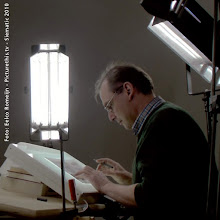Saturday, November 3, 2012
Wednesday, December 15, 2010
Bertrand Russell's Celestial Teapot
The teapot stands for a number of things - like God and E.T.'s - whose existence is improbable but cannot be disproved. The odds in favor of the teapot are not equal to the odds against.
The teapot-icon is meant as a friendly yet powerful symbol of reason in a world of nonsensical beliefs.
The Celestial Teapot was an analogy first coined by the philosopher Bertrand Russell (1872-1970), intended to refute the idea that the burden of proof lies upon the sceptic to disprove claims of religions. In 1952 Russell wrote:
" If I were to suggest that between the Earth and Mars there is a china teapot revolving about the sun in an elliptical orbit, nobody would be able to disprove my assertion provided I were carefull to add that the teapot is too small to be revealed even by our most powerful telescopes.
But if I were to go on to say that, since my assertion cannot be disproved, it is an intolerable presumption on the part of human reason to doubt it, I should rightly be thought to be talking nonsense. If, however, the existence of such a teapot were affirmed in ancient books, taught as the sacred truth every Sunday, and instilled in the minds of children at school, hesitation to believe in its existence would become a mark of eccentricity and entitle the doubter to the attentions of a psychiatrist in an enlightened age or of the Inquisitor in an earlier time."
Labels:
Atheism,
Bertrand Russell's Teapot,
God,
Happy Heathen,
Quackery
Subscribe to:
Posts (Atom)















